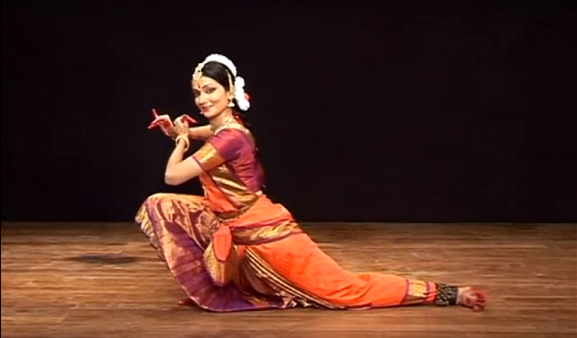by Gwynn Van Houten
Sona Karun is a sophomore at Tustin High. She has played basketball, taken karate lessons, and is a member of STEM and MUN. She is an accomplished honors student, and a great friend to boot.
But anyone can figure that out. Sona knows that there’s so much more to who she is, and she’d like to share that with the world.
Before she could walk and talk (and even before she was born, she jokes), Sona has had a talent for Bharatanatyam, a classical Indian dance with roots in ancient Hindu temples, said to be a divine form of art. It is renowned for its elegance and ability to communicate stories and emotions — a “dance of life”, as Sona describes. Not only is it physically challenging, but also emotionally so; when she dances, she feels everything that her character does: the pain, the sorrow, and the joy.

Bharatanatyam, as performed by Savitha Sastry.
But recently, Sona began to wonder why she dances. Is it just ‘cause it’s fun? Is it just a way to get her body moving and her mind working?
No mere definition of the word suited the way she felt. Her search for the truth behind her passion is the subject of a presentation nominated by TED-Ed, a branch of the TED conferences dedicated to educating and empowering youth.
In her presentation, “The Power of Dance”, Sona describes a perceived disconnection between her body and herself — the web of emotions, feelings, ideas, knowledge, and experiences that make up who she is. To her, a body is simply a way to communicate what goes on in this web.
This disconnection is not necessarily a positive thing. In fact, she regards her image as a “barrier” that makes it difficult for others to see what lies beneath, like looking at a painting without understanding the meaning behind it. This barrier traps her in, like walls, and in order to communicate, she needs to find a way to pass through them.
We all have walls. Bharatanatyam is Sona’s way of breaking hers down. It grants her a sense of freedom, and lets her express what can’t be seen on the surface. Through dance, she can be truly understood.
Sona concludes her lecture with an invaluable piece of advice,
“Find something that allows you to break from those walls, and allows you to remove that image,”
and encourages her audience to compliment someone — not on their appearance, but on their kindness, their ideas, their understanding or their knowledge. Tell someone why you love them.
Sona’s lesson may be featured on the TED-Ed website, joining tens of thousands of other videos in providing unique and insightful information to the whole world.
👌🏻👌🏻👌🏻😊..